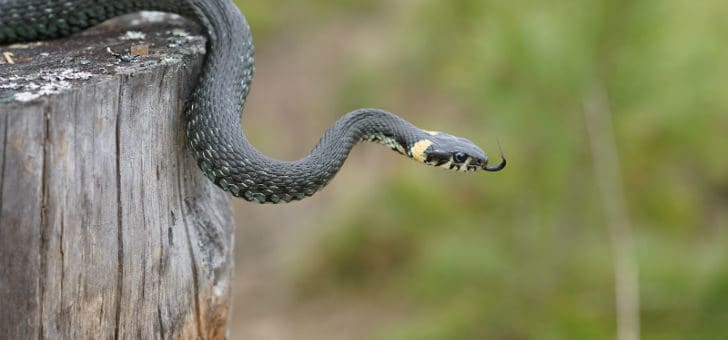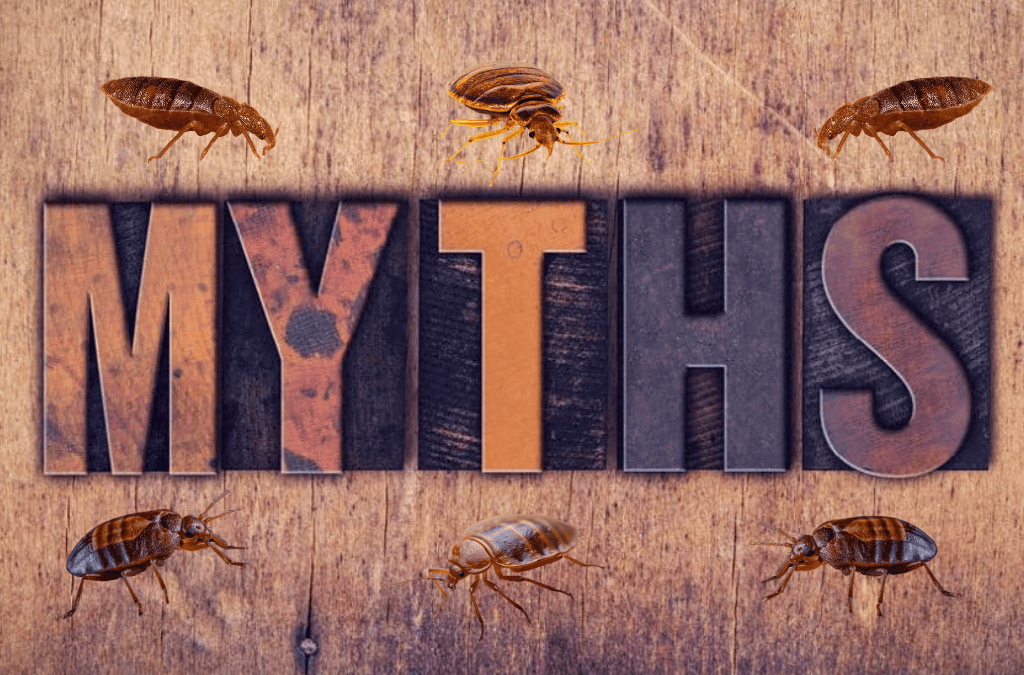READY TO GET STARTED?
REQUEST A FREE ESTIMATE
Fill out the form below or call (336) 226-1448 for a free, no-obligation estimate.

Termites may be small, but their impact on homes across North Carolina is anything but insignificant. Burlington homeowners need to be on high alert, as our warm, humid climate provides the perfect environment for these destructive pests. Termites are silent invaders, often causing extensive damage long before they’re even noticed. The good news? With early detection and proactive measures, you can protect your home and avoid costly repairs. Here’s what you need to know about termite control in Burlington before it’s too late.
Termites feed on cellulose, the main component of wood, which makes your home’s foundation, insulation , and even furniture a prime target. The damage they cause can compromise your home’s structural integrity, leading to repairs that cost homeowners across the U.S. billions of dollars annually. Termites don’t discriminate either; even brick and concrete homes are at risk if they contain wooden structures or supports.
Due to Burlington’s climate, termite activity is prevalent year-round. Subterranean termites are the most common species in the area, building colonies underground and tunneling into homes undetected. This is why early detection and prevention are so crucial. By the time termites leave visible signs of their presence, significant damage may already have been done.
Catching a termite infestation early can save you time, money, and stress. Here are some common signs to watch out for in your Burlington home:
If you notice any of these signs, it’s time to act quickly. Termites won’t go away on their own, and delaying treatment will only allow the problem to worsen.
The best way to handle termites is to stop them before they infest your home. Here are some practical tips:
Termites are a serious threat to Burlington homeowners, but with the right knowledge and proactive measures, you can keep them from damaging your home. If you suspect termite activity or want to take preventative steps, don’t wait. Contact a trusted pest control provider today for a thorough inspection and effective termite control plan. Your home is one of your biggest investments – make sure it’s protected!

North Carolina’s warm, humid climate often invites flies into homes, creating a frustrating problem. Thankfully, you can significantly reduce the risk of fly infestations with these five practical steps.
Flies are drawn to food and waste, so maintaining cleanliness is crucial.
Flies can slip through even the smallest cracks.
Outdoor breeding grounds often lead to indoor fly issues.
Target what draws flies in to make your home less inviting.
When flies persist, add extra measures to stop them.
By combining cleanliness, proper sealing, and proactive outdoor maintenance, you can create an environment that flies find hard to thrive in. Take these steps to keep your home more comfortable and pest-free! Reach out to your local pest control company for expert tips.
Call us or click the button below to get started with a FREE pest control quote!

Wasps and hornets can become a major problem when their nests appear near your home. These stinging insects not only pose risks to your family’s well-being but can also grow aggressive when disturbed. To prevent nests from forming, a proactive approach using effective pest control methods is key. Here are some practical tips to keep wasps and hornets away.
Wasps and hornets are drawn to messy, overgrown outdoor spaces. By eliminating clutter and potential food sources, you make your home a less appealing target.
If wasps and hornets remain a persistent issue or large nests appear near your home, it’s best to seek professional help.
Removing food sources and addressing nests early all reduce the likelihood of dealing with wasps and hornets in your North Carolina home. If the problem persists or feels overwhelming, contacting a pest control professional can save you time and effort. By acting quickly and using effective methods, you can enjoy a healthier and more comfortable home environment.
Call us today or click the button below for a FREE pest control quote!

In Burlington and across Alamance County, the warm climate and diverse ecosystems are perfect for an abundance of snake species. While a snake in your yard or home can be startling, most are harmless and even helpful in controlling pests like rodents and insects. Learning to identify common snakes in North Carolina and knowing how to handle encounters effectively can help you feel more at ease.
Both non-venomous and venomous snakes are found throughout the state. Here’s an overview of the species you’re most likely to encounter in or around your home.
If you come across a snake, identifying it is key to understanding how to proceed. Here are some distinguishing features to look for but remember not to get too close when inspecting a snake.
If you’re not sure about the type of snake, it’s best to leave it alone and avoid handling or interfering with it.
Spotting a snake in your home or yard can be unsettling. However, you can take steps to manage the situation and reduce potential risks.
You can take steps to make your property less appealing to snakes and limit how often you see them near your home.
While encountering a snake might not be a pleasant experience, understanding their role in the ecosystem can help shift your perspective. Snakes are valuable for pest control and maintaining natural balance. By taking steps to identify and prevent encounters, you can reduce situations that cause stress and keep your property better protected.
If you’re facing recurring snake-related challenges, working with a pest or wildlife professional can provide tailored solutions to make your home and yard less attractive to them. With just a bit of planning and awareness, you can cohabitate with these fascinating creatures more easily.
Contact us today for a free snake control quote. Give us a call or click the button below to get started!

Bed bugs are often misunderstood, and unfortunately, many of the myths surrounding them can lead to confusion and improper management. For residents of North Carolina navigating pest control understanding the realities of bed bug behavior, prevention, and solutions is key to maintaining peace of mind in your home. This guide to bed bug control near me will break down common misconceptions about bed bugs and provide the clarity needed to understand how to best address them.
One of the most persistent myths about bed bugs is that they are drawn to dirt and unsanitary conditions. The truth? Bed bugs are not discriminating. What they are actually seeking is a food source, which primarily comes from human activity.
Whether your home is impeccably clean or cluttered, bed bugs can find their way in. They hitch rides on luggage, second-hand furniture, clothing, and even electronics, making anyone susceptible. For homeowners in North Carolina, being proactive when returning home from travel or shopping for used goods is essential to keeping these pests at bay. Regularly inspecting these items can reduce the risk of unknowingly introducing bed bugs into your home.
Walking into a hardware store and grabbing the first pest spray on the shelf can be tempting when faced with a bed bug issue. However, bed bugs are notoriously hardy and resistant to many common pesticides. Over-the-counter sprays often address only surface-level infestations, leaving eggs hidden in cracks and crevices untouched.
Additionally, DIY approaches can sometimes worsen the problem by dispersing bed bugs to other parts of your home. Seeking professional pest control services in North Carolina ensures that the issue is addressed comprehensively with techniques specifically designed to manage infestations effectively.
Don’t let the name fool you. Though they commonly live in mattresses and box springs, bed bugs are known to inhabit a variety of spaces. From couches and carpets to baseboards and electrical outlets, they are experts at hiding in any place where humans spend extended amounts of time.
For North Carolina homeowners, this means thorough inspections are crucial. Instead of focusing solely on your bed, examine furniture, rugs, and even cracks in your walls for signs of these pests. If you spot their small rust-colored spots or witness live bugs, consult a professional immediately to evaluate the full extent of the issue.
Unlike other pests, such as mosquitoes or ticks, bed bugs are not known to transmit diseases. While their bites can cause itching and discomfort, they are not a direct health hazard in terms of spreading illnesses. Instead, the primary concern tends to be psychological stress and disrupted sleep for homeowners dealing with an infestation.
To ease the mental burden, North Carolina residents can focus on preventative strategies to reduce the likelihood of encountering bed bugs. These include using mattress encasements, vacuuming frequently, and carefully inspecting luggage after traveling.
Extreme temperatures are often highlighted as an effective method for dealing with bed bugs. While heat and cold treatments do work under the right conditions, achieving the precise temperatures necessary to impact all life stages of bed bugs (including eggs) can be difficult on your own. Bed bugs are adept at finding protected hiding spots, making it challenging to expose them fully to these conditions.
Licensed pest control experts use specialized equipment to apply targeted heat or cold treatments when appropriate, ensuring that the intervention reaches every corner where bed bugs may be hiding. Avoid relying on home remedies like leaving infested items outside during a North Carolina winter, as these methods often fail to deliver complete results.
One of the more damaging misconceptions about bed bugs is the assumption that they indicate a lack of cleanliness. This belief creates shame and delays individuals from seeking help when they need it most.
Bed bugs thrive in locations where people spend extended periods of time, regardless of how clean or organized the environment is. For North Carolina residents, understanding that these pests are not a hygiene issue can help empower the decision to take swift action without judgment or hesitation.
Now that we’ve addressed the common myths surrounding bed bugs, the next step is to take preventative and responsive measures to protect your home. Armed with accurate knowledge, North Carolina homeowners can better manage these pests and ensure a pest-free environment.
If you’re unsure about how to proceed, consulting with a local pest control provider ensures you receive expert guidance tailored to your specific needs. Whether you want peace of mind or comprehensive assistance with an active infestation, working with bed bug control near me will provide the thorough solutions you’re looking for.